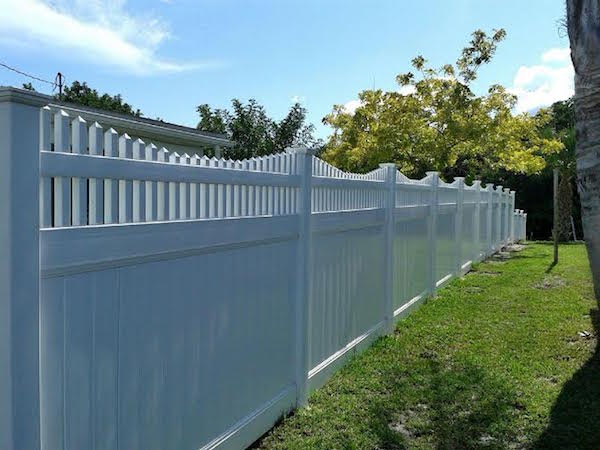
Barbed Wire: Wire fencing that is constructed with barbs or points. Most often used in fencing for agricultural purposes.
Chain Link: A fence made from steel posts and chain.
Corner Post: The post that sits at the corner where two lines of fencing meet.
Cross fencing: Fence lines that divide pastures within a piece of property.
Double Swing Gate: A hinged gate with two leaves, most often used to gate driveways or other areas that demand a wide gate.
End Post: A fence post that is only punched on one side and marks the end of a line of fencing. End posts are used as the terminal post or as gate posts.
Electric Fence: Any fence through which an electric current is run, usually to keep livestock or animals inside a perimeter.
Eye Top: In chain link fencing the eye top is a cap for a line post that has a loop through which to pass the top rail.
Fence Line: The actual position of the fence.
Fence Laying: Delivering materials to the fence line and laying them out before the job starts.
Fencing Pliers: Pliers made specifically for fencing projects. Especially helpful when installing wire fencing.
Fence Tie: Ties that are used in chain link fencing to attach the fence to the line posts.
Ready to start your fencing project?
Find ProsGate: structure that allows access through the fence.
Lattice Fencing: Wood fencing, usually cedar, constructed of prefabricated lattice panels.
Line Post: A post between terminal posts that provides support for the fence.
Ornamental Fencing: Any fence that is made of, or imitates, a cast iron fence. Provides for traditional fencing needs with added aesthetic appeal.
Perimeter Fence: Fence line around the outer boundary of a piece of property.
Picket Fence: Any fence in which the fencing is comprised of evenly spaced, vertical slats.
Post Cap: A cap that covers the end of a fence post. Post caps are most often used in vinyl and chain link fencing.
Post Driver: A tool used for driving fence posts into the ground.
Post and Rail: Any fence made from horizontal rails fastened to vertical posts.
Privacy Fence: A fence with close fitting vertical pickets that block views into a yard or area.
Rail End: The post at each end or corner of a run of fencing.
Rail Spacing: The distance between the rails on a fence. In general, the more rails there are, the closer the spacing.
Raking: The installation of fence sections that allow the fence to follow the grade.
Section: The run of fence between two posts.
Single Swing Gate: Any hinged gate that is built with only one leaf.
Split Rail: A popular post and rail fence made from rough hewn wood, usually consisting of two horizontal rails that fit into notched posts.
Stair Stepping: The process of installing fence in “stair-steps” in order to meet the requirements of a steep grade. Each section is uniform, but the sections are at different levels, creating a “stair-step” look.
Terminal Post: The post that goes at the end of a fence or at entryways and gates. The terminal post provides the main support for the entire fence. Includes corner posts, end posts, stair-step posts and gate posts.
Top Rail: On a rail fence the top rail is the bar that runs the entire length of the fence on the top to provide support for the fence.
Tension Band: In chain link fencing the tension bands are the steel bands that attach the tension bar to the terminal post.
Tension Bar: A bar that is intertwined in the end of chain link fencing that allows the fence to be attached to the terminal post.
Underground or Hidden Fencing: Used for pet control, underground or hidden fencing comprises of an underground wire that sends a radio signal to a collar that provides a pet with a small electric shock when the fence line is crossed. Useful for pet owners who want an open yard or for yards in subdivisions where regular fences are prohibited.
Ready to start your fencing project?
Find ProsVinyl/PVC Privacy Fencing: A prefabricated fence made of PVC plastic. Vinyl fencing can imitate a variety of fence designs, including board, rail, picket, lattice, and ornamental metal. It is virtually indestructible and usually comes with a guarantee.
Wire Fencing: Fencing constructed of lines of wire pulled tight between fence posts. Most often used for agricultural fencing needs.
Wood Fencing: Any fence made from wood fencing materials. Requires a higher level of maintenance in the form of painting or staining than other fencing to combat weathering.
Wrought Iron: Fencing made of hardened, welded steel. More expensive than other fencing, but wrought iron fencing is incredibly strong, long lasting and comes with the added options of ornamental design.
 Fix-It 101: The Fix-It Literacy Guide
Fix-It 101: The Fix-It Literacy Guide 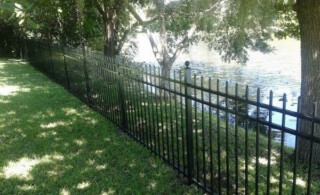 Maintenance Free Aluminum Fencing
Maintenance Free Aluminum Fencing 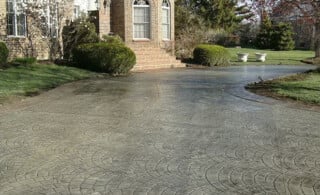 Concrete Calculator
Concrete Calculator 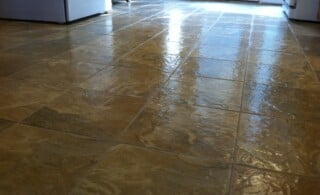 Vinyl Flooring Calculator
Vinyl Flooring Calculator 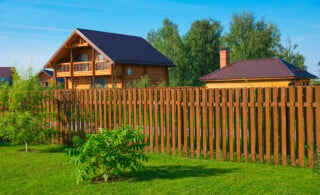 Vinyl vs. Wood Fencing: What’s the Difference?
Vinyl vs. Wood Fencing: What’s the Difference? 

Are You Familiar With This Topic? Share Your Experience.